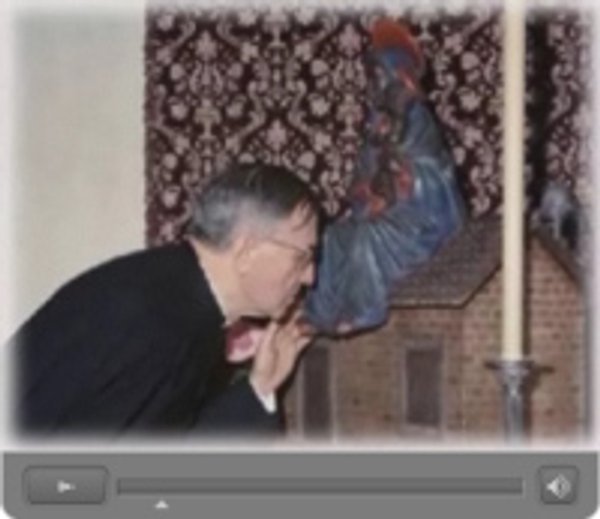The following are 3 excerpts from his homilies and addresses during the Pope’s visit to Lourdes for the 150th Anniversary of the Lourdes Apparitions.
* * * * * * *
1. Mary comes to us as a Mother, always open to the needs of her children
It is significant that during the first apparition to Bernadette, Mary begins with the sign of the Cross. More than a simple sign, it is an initiation into the mysteries of the faith that Bernadette receives from Mary. The sign of the Cross is a kind of synthesis of our faith, for it says how much God loves us; it tells us that there is a love in this world that is stronger than death, stronger than our weaknesses and sins.
The power of love is stronger than the evil that threatens us. It is this mystery of the universality of God’s love for men that Mary came to reveal here in Lourdes. She invites everyone of good will, all who suffer in heart or body, to raise their eyes to the Cross of Jesus so as to discover there the source of life, the source of salvation….
Mary comes to us as a mother always open to the needs of her children. Through the light streaming from her face God’s mercy is made manifest. We must allow ourselves to be touched by her gaze, for it lets us know that we are all loved by God, that he will never abandon us!
Mary comes to remind us that humble and intense, trusting and persevering prayer must have a central place in our Christian lives. Prayer is indispensable if we are to receive Christ’s power.
‘People who pray are not wasting their time, even though the situation appears desperate and seems to call for action alone’ (Deus Caritas Est, 36). Letting oneself become absorbed by activity risks depriving prayer of its specifically Christian character and its true efficacy.
The prayer of the Rosary, so dear to Bernadette and to Lourdes pilgrims, concentrates within itself the depths of the Gospel message. It introduces us to contemplation of the face of Christ. From this prayer of the humble we can draw an abundance of graces.
(Homily of the Mass, September 14, 2008)
2. The smile of Mary is our source of an invincible hope.
Mary loves each of her children, giving particular attention to those who, like her Son at the hour of his Passion, are suffering: She loves them quite simply because they are her children, according to the will of Christ on the Cross….
Christians have always sought the smile of Our Lady…. This smile of Mary is for all, but it is directed quite particularly to those who suffer, so that they can find comfort and solace there. To seek Mary’s smile is not an act of devotional or outmoded sentimentality, but rather the proper expression of the living and profoundly human relationship that binds us to her as our Mother….
Here in Lourdes…Bernadette contemplated this smile of Mary in a most particular way. It was the first response that the Beautiful Lady gave to the young visionary who wanted to know who she was. Before introducing herself some days later as ‘the Immaculate Conception,’ Mary first taught Bernadette to know her smile, this being the most appropriate point of entry into the revelation of her mystery.
In the smile of the most eminent of all creatures as she looks upon us is reflected our dignity as children of God, a dignity that never abandons the sick person. This smile, a true reflection of God’s tenderness, is the source of an invincible hope.
(Homily of the Mass with the Sick at Lourdes, September 15, 2008)
3. Mary offers us her heart and her gaze
In the course of the apparitions, it is notable that Bernadette prays the Rosary under the gaze of Mary, who joins her at the moment of the doxology [Glory be to the Father…]. This fact confirms the profoundly theocentric character of the Rosary. When we pray it, Mary offers us her heart and her gaze so as to contemplate the life of her Son, Jesus Christ….
Mary teaches us to pray, to make of our prayer an act of love for God and an act of fraternal charity. By praying with Mary, our hearts welcome those who suffer. How can this fail to transform our lives? Why should our whole life and being not become places of hospitality for our neighbors?
[The procession] summarizes our condition as Christians on a journey: We need light, and at the same time we are called to be light. Sin makes us blind; it prevents us from making ourselves available to guide our brothers and sisters, and it makes us unwilling to trust them to guide us. We need to be enlightened, and we repeat the prayer of blind Bartimaeus, ‘Master, may I see!’ (Mk 10:51). May I see the sin that holds me back, but above all, Lord, may I see your glory!
(Address at the Conclusion of the Torchlight Procession, September 13, 2008)
